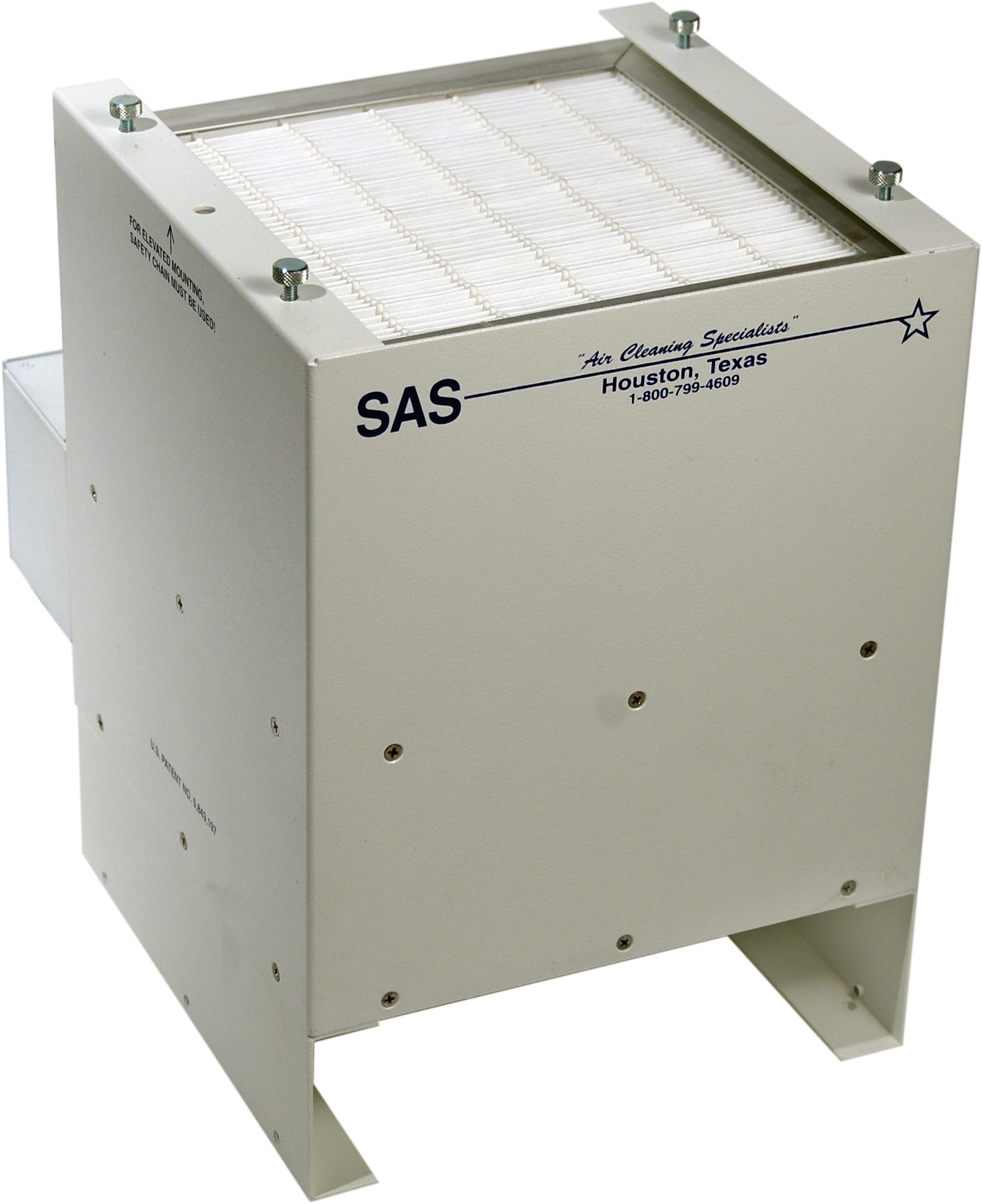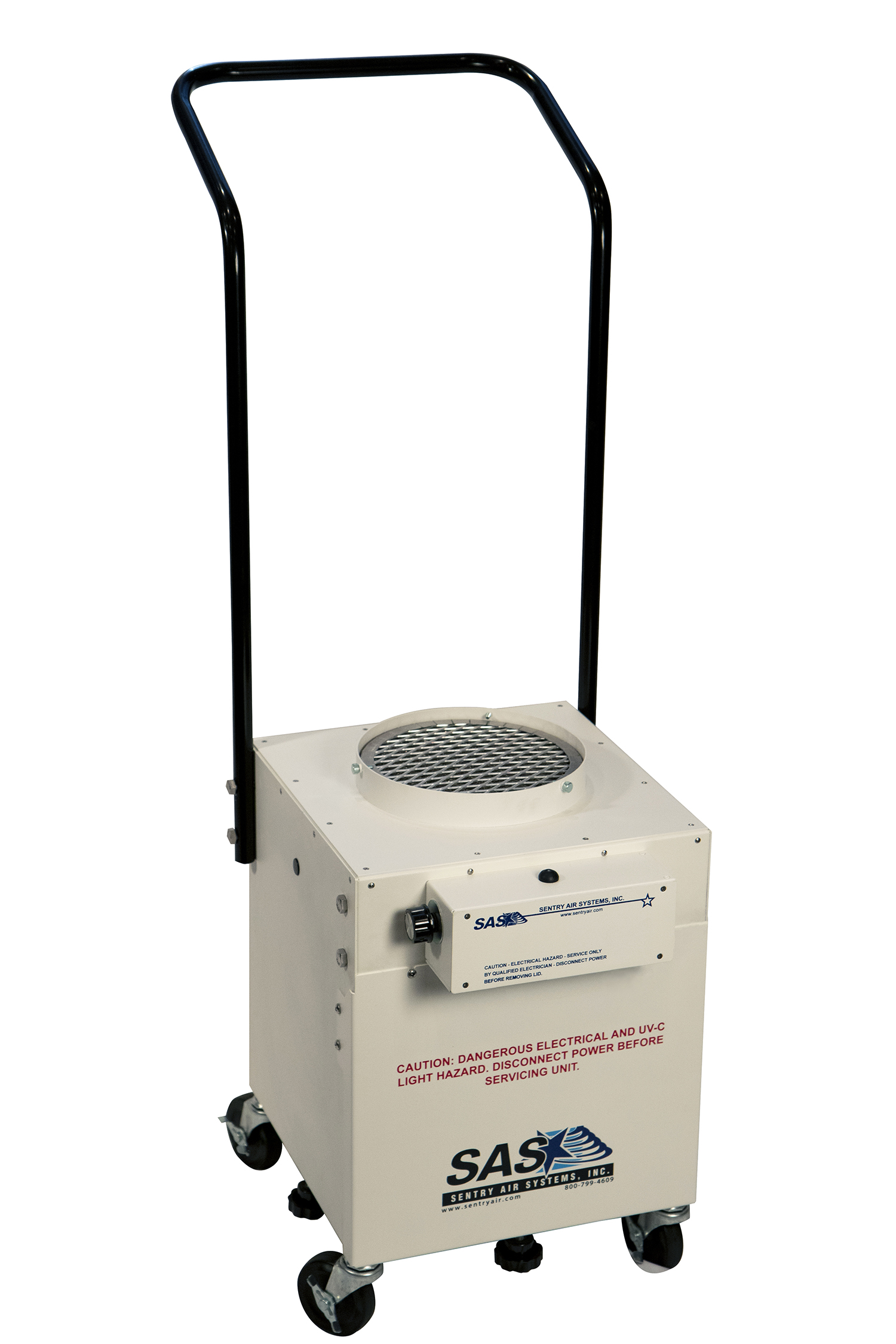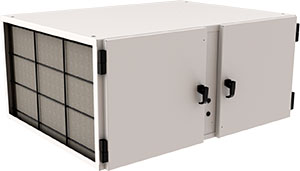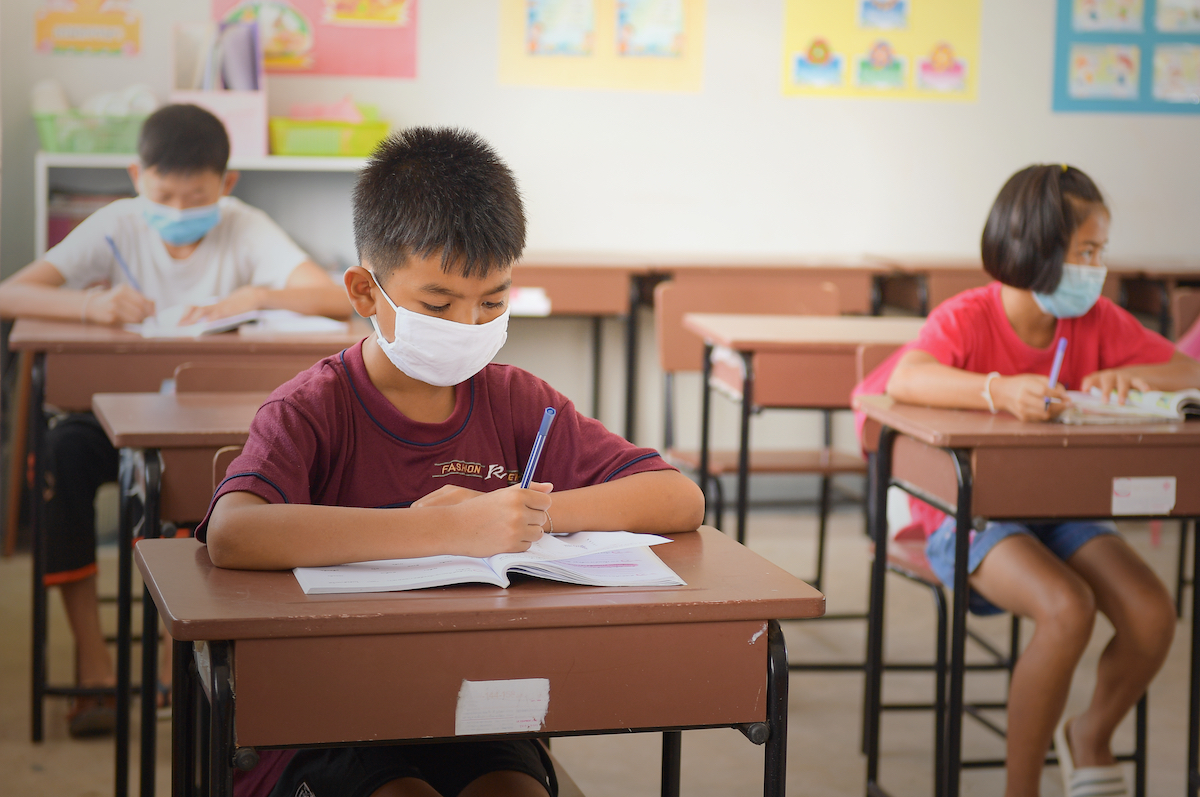
Students wearing masks in a classroom (Source)
This year, the start of the school year has a much different climate and routine with schools using varied instructional methods including virtual classrooms, in-person instruction, and a combination of both. In-person instruction can play a vital role in a student’s education, emotional and social development, and mental health support (Ref. 1). Likewise, schools furnish critical community services such as food programs, special education, and speech/occupational therapy. To provide a safe learning environment, the educational administration must assess current building ventilation and overall indoor air quality to prevent the transmission of COVID-19.
Importance of Indoor Air Quality in Schools
Overall indoor air quality plays an important role in educational facilities. Proper ventilation in schools has been shown to help with concentration, calculation, and memory as well as reduce absenteeism, improve performance, and increase the student’s chance of success (Ref. 2). In particular, proper ventilation and indoor air quality reduces the amount of airborne contaminants such as pollen, allergens, smoke, viruses (such as SARS-CoV2 the virus that causes COVID-19), mold spores, and other microorganisms that can cause asthma, allergies, and diseases. While some of these health effects may only cause short term effects, the EPA maintains that “health effects from indoor air pollutants may be experienced soon after, or possibly, years later.” (Ref. 3).
Recommendations for Combatting COVID-19 in Schools
State Education Departments provide recommendations and guidelines to help schools reopen and prevent the spread of COVID-19. The Texas Education Agency (TEA) encourages increasing the frequency of handwashing and hygiene as well as improving the airflow in classrooms (Ref. 4). Also, the TEA suggests that schools and educational facilities follow CDC’s Considerations for Operating Schools during COVID-19. The CDC’s suggests the following for airflow and filtration considerations: (Ref. 5)
1. Assess HVAC system ventilation and airflow capabilities using certified HVAC professionals.
2. Consider opening windows and doors to increase the use of fresh outdoor air.
3. Check indoor air quality of schools.
4. Increase airflow and air filtration in classrooms.
5. Use portable HEPA filtration systems to supplement ventilation and in high risk areas such as the nurse’s office.
In addition, the American Society of Heating, Refrigerating, and Air Conditioning Engineers (ASHRAE) recommends the use of MERV 13 air filters in HVAC systems and implementing the use of HEPA air cleaners in facilities without mechanical ventilations (Ref. 6). Germicidal ultraviolet air disinfection devices can also be used to supplement ventilation and filtration.
Educational Air Filtration Solutions for COVID-19
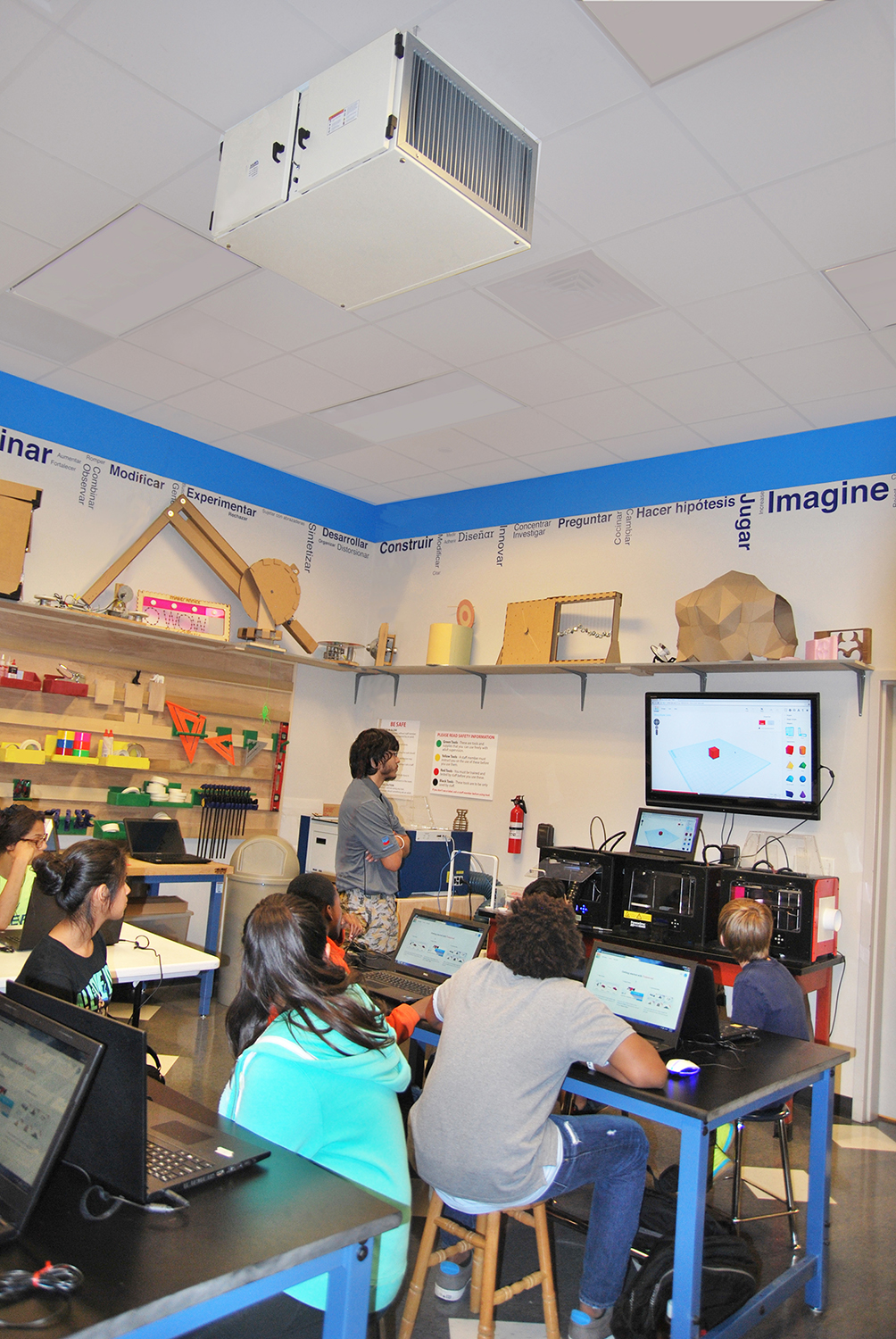
Model 700 Ceiling Mounted Room Air Cleaner provides high quality air filtration in a classroom environment.
Portable HEPA Air Cleaners can provide supplemental support against disease transmission of COVID-19. In conjunction with HVAC updates, masks, and social distancing, portable air filtration systems can help students and staff feel safer returning to the classroom, in turn reducing anxiety and improving concentration. Air filtration devices use no harsh chemicals to help cleanse the air and reduce airborne particulate. Older facilities can benefit from using portable air purifiers due to the easy and inexpensive installation. Also, these air filtration systems can provide beneficial air quality improvements after the pandemic.
Sentry Air Systems offers a variety of customized solutions to improve indoor air quality in schools and protect staff and students from disease transmission. These systems utilize a powerful fan and high quality filters to capture airborne contaminants such as dust, pollen, respiratory droplets, viruses, mold spores, and other microorganisms. Filter options include HEPA filters which offer up to 99.97% efficiency on particles as small as 0.3 microns and ULPA filters which provide up to 99.9995% efficiency on particles as small as 0.12 microns. ULPA filters offer additional protection against SARS-CoV2 (virus that causes COVID-19) which is 0.13 microns in size. Sentry Air Systems has prepared several conceptual drawings to illustrate unique air filtration solutions for classrooms, nurse offices, and isolation rooms.
Individual Desk Air Filtration Solutions
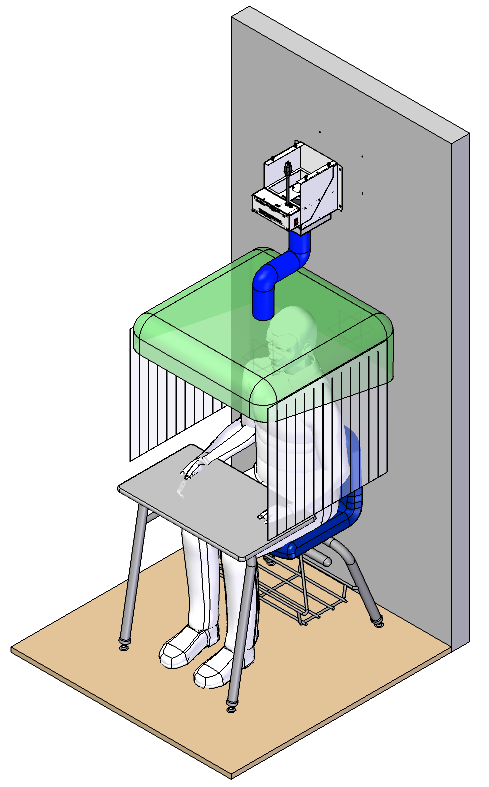 SS-200-SKY mounted on wall with custom hood SS-200-SKY mounted on wall with custom hood |
For individual desk setups, our Model 200 Wall Mounted Air Cleaner connects with a python hose to a clear polycarbonate hood with curtains to trap in most respiratory aerosol from the student. The python hose allows the system to draw in respiratory droplets and remove most them from the airflow before releasing filtered air back into the classroom. |
Group Table Air Filtration Solutions
For group tables, workstations can be set up with dividers between students with a Model 300 or 400 Air Cleaner mounted in the middle of the table. This setup allows students to work together while the central air cleaner draws in respiratory droplets. These powerful air purifiers can be fitted to a 60” or 48” size table.
Model 300 Mounted Sentry on 48” Table
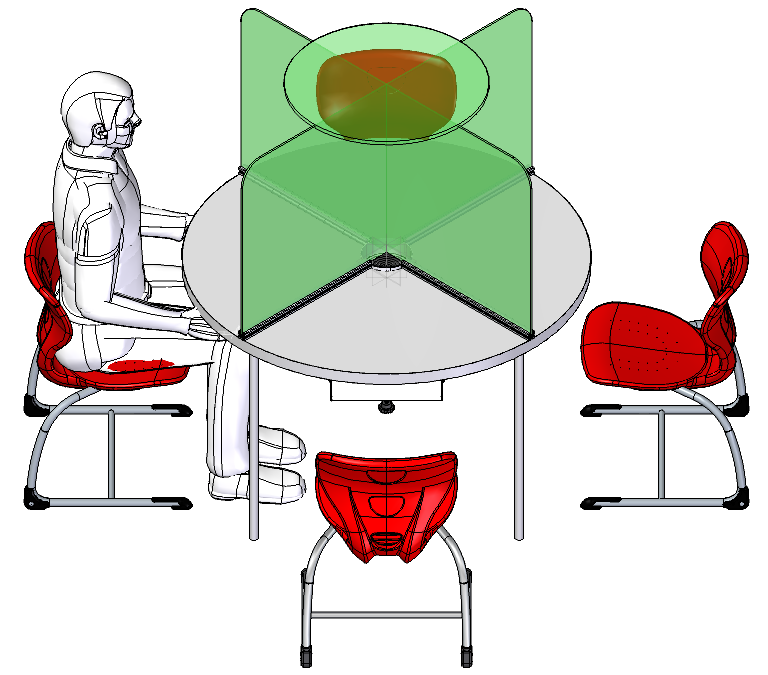 |
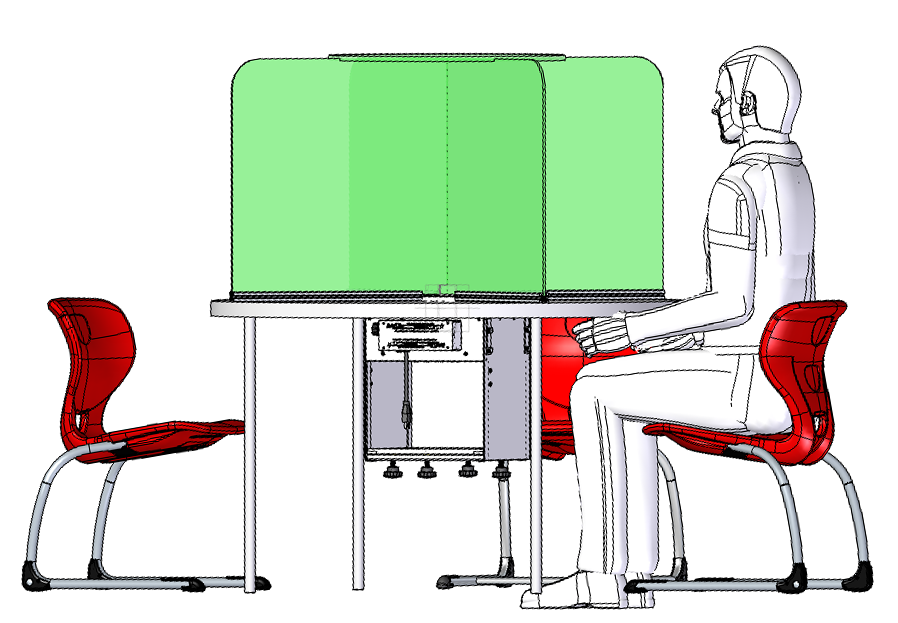 |
Model 400 Mounted Sentry on 60” Table
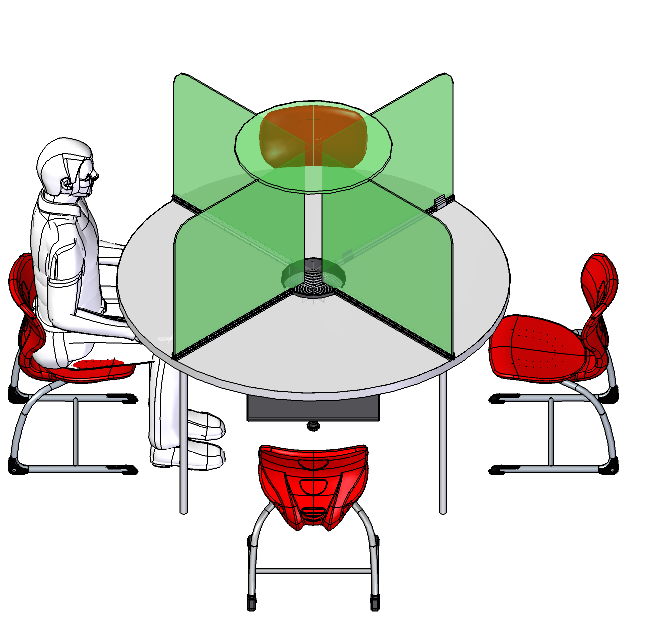 |
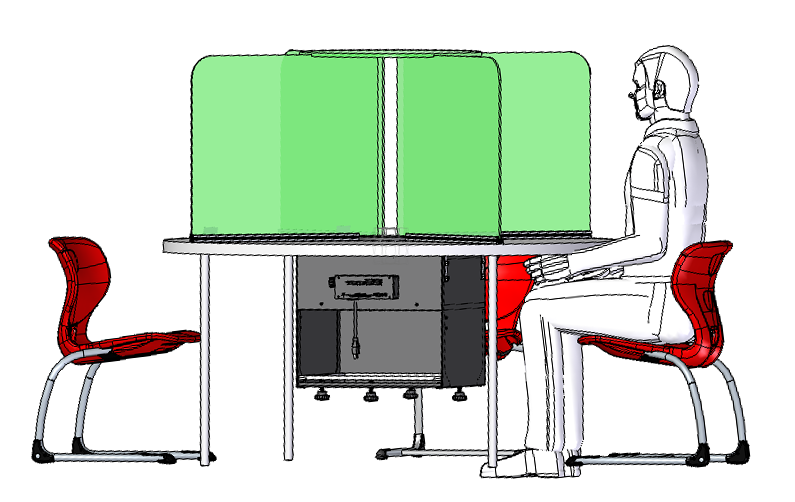 |
Overall Classroom Air Filtration Solutions
This classroom conceptual drawing depicts both the individual desk and group table air filtration solutions to prevent the spread of COVID-19.
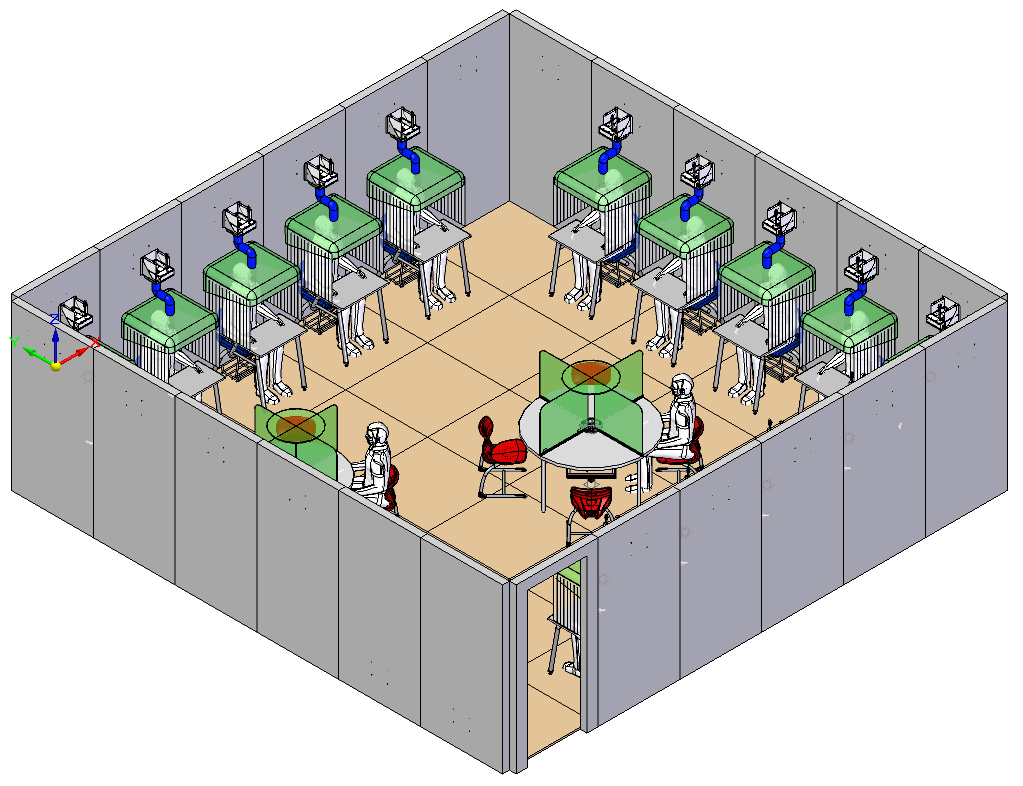
Other Recommended Classroom Air Cleaning Solutions
Model 200 Personal Air Cleaner – SS-200-PRAC
Model 300 Air Cleaner with UV-C Light – SS-300-UVC-PRAC
Model 700 Ambient Air Cleaner – SS-700-FH
Prepare your school for students this year with Sentry Air Systems custom education air filtration solutions for COVID-19. Sentry Air Systems offers customized solutions for your educational facility. Need a different solution? Contact us today to get started!
Call us today at 1-800-799-4609
Please note:These systems are meant as a secondary protection device and not meant as a primary solution. The systems provide a safety precaution to assist in the protection of exposure to harmful particulate and viruses.
Sources
1. “Preparing K-12 School Administrators for a Safe Return to School in Fall 2020.” Centers for Disease Control and Prevention, 26 Aug 2020. https://www.cdc.gov/coronavirus/2019-ncov/community/schools-childcare/prepare-safe-return.html.
2. “Why Indoor Air Quality is Important to Schools.” United States Environmental Protection Agency. https://www.epa.gov/iaq-schools/why-indoor-air-quality-important-schools.
3. “Introduction to Indoor Air Quality.” United States Environmental Protection Agency. https://www.epa.gov/indoor-air-quality-iaq/introduction-indoor-air-quality.
4. “SY 20-21 Public Health Planning Guidance.” Texas Education Agency, 4 Aug 2020. https://tea.texas.gov/sites/default/files/covid/SY-20-21-Public-Health-Guidance.pdf.
5. “Operating schools during COVID-19: CDC’s Considerations.” Centers for Disease Control and Prevention, 21 Aug 2020. https://www.cdc.gov/coronavirus/2019-ncov/community/schools-childcare/schools.html.
6. “Guidance for the re-opening of schools.” ASHRAE. https://www.ashrae.org/file%20library/technical%20resources/covid-19/guidance-for-the-re-opening-of-schools.pdf.

 Made in the USA
Made in the USA
